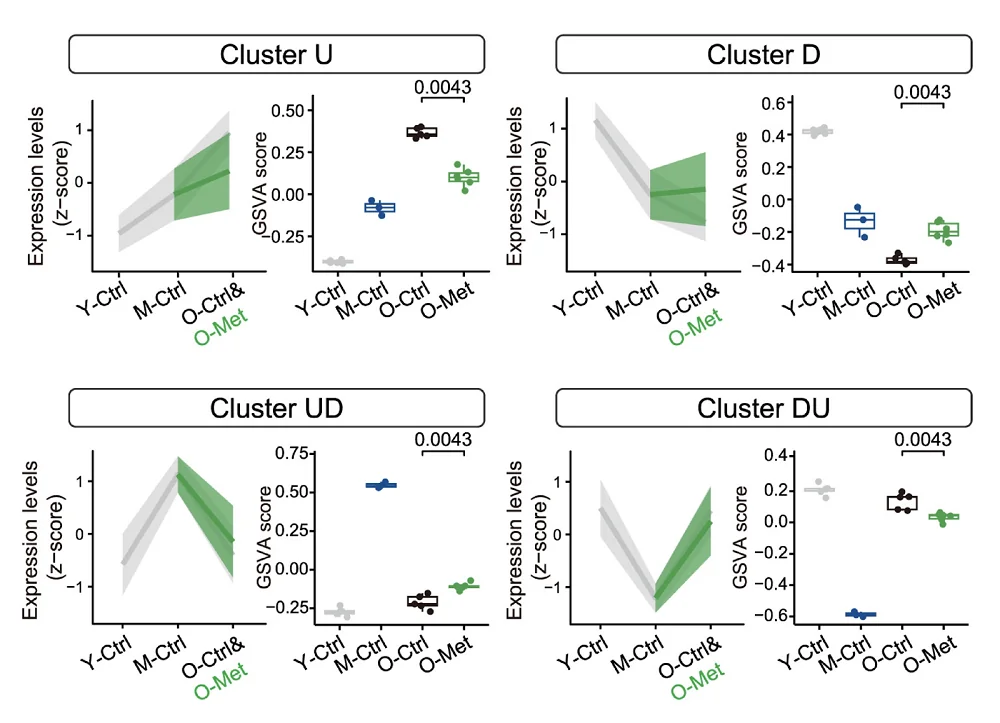In a new study, metformin, which has already shown good results in rodents and in human epidemiological studies, alleviated multiple signs of aging in male cynomolgus monkeys [1].
Now in monkeys
Metformin, a well-established anti-diabetes drug, has been touted as a possible geroprotector since a study suggested that diabetes patients on metformin outlived age-matched healthy controls [2]. A newer study put these claims in doubt [3], but metformin is far from being dethroned.
While a rigorous study by the Interventions Testing Program (ITP) failed to produce life extension in mice on metformin [4], smaller studies have. In animal models, metformin has alleviated multiple hallmarks of aging, and it has also been linked to a reduction in health risks in humans. The ambitious Targeting Aging with Metformin (TAME) study is expected to shed more light on the drug’s effects, when and if it takes off the ground.
Meanwhile, a group of Chinese scientists performed a groundbreaking long-term study of metformin in cynomolgus monkeys. These relatively long-lived non-human primates match human biology much better than mice.
Improved cognitive function
The study lasted for 40 months and “encompassed a comprehensive suite of physiological, imaging, histological, and molecular evaluations” with 68 parameters overall. For their study group, the researchers took male cynomolgus monkeys aged 13 to 16 years, which is roughly equivalent to 40 to 50 human years. There were also three control groups: old, young, and middle-aged monkeys. The dose chosen was 20 mg/kg, which is a standard dosage for long-term anti-diabetes use in humans.
Metformin was mostly safe in these monkeys, just like in humans. The researchers periodically assessed multiple parameters and found that the treatment was associated with numerous health benefits. To begin with, the monkeys on metformin demonstrated better cognitive performance than age-matched controls in both memory and learning.
These results matched the analysis of cortical thickness in several brain regions. Compared to controls, which showed a decrease in cortical thickness with age, “in metformin-treated aged monkeys, frontal lobe cortical thickness was preserved, with a trend toward increased thickness in the parietal lobe,” the paper says.
Less transcriptomic aging and inflammation
Digging deeper into the mechanisms of metformin-related improvements, the researchers conducted organism-wide and genome-wide RNA sequencing, profiling 79 tissues and organs. They found that in terms of expression, genes in control groups could be divided into four clusters: expression goes down with age (D), expression goes up with age (U), expression goes up and then down (UD), and expression goes down then up (DU). In all four clusters, age-dependent changes were significantly mitigated by the treatment:

Metformin was also associated with decreased accumulation of senescent (p21-positive) cells in multiple tissues and with less fibrosis in the lung, kidney, and heart. There were signs of slower muscle aging and of increased epigenetic stability (lower endogenous retroviral activity).
“Strikingly,” the paper says, “we detected a widespread, potent effect of metformin in curbing chronic inflammation, a cardinal hallmark of aging that underlies almost all aging-related diseases.” Metformin was associated with reduced age-related inflammation in the liver and stomach. A reduction in immune cell infiltration was detected in the lung, liver, and kidney.
The clock ticks slower
The researchers constructed a set of biological age clocks using multi-omics data. Their analysis showed a 6.41-year reduction in biological age following metformin treatment, with the biggest reductions in the brain, lung, kidney, and liver. In all 13 tissues analyzed, the clock was reversed to some degree.
Several cell types were also analyzed in depth using single-nucleus transcriptomics. Mirroring the tissue-level results, hepatocytes (liver cells) and various brain cells showed the most robust slowing of biological age following the treatment.
Finally, the researchers reported that metformin reduced aging-associated periodontal bone loss. Not only is periodontal disease caused by aging, but it also probably exacerbates other aging processes by increasing inflammation [5].
Among the limitations of this study is its small sample size and its use of only male monkeys. This makes it harder to extrapolate the results to the female population, since females and males age differently.
Over 3 years, we evaluated metformin’s systemic geroprotective effects in healthy monkeys, taking advantage of their physiology and organ structure akin to humans, as well as their disease and medication responses. Our results indicate metformin’s capacity to ameliorate aging across the primate body, with multidimensional aging clocks showing a rejuvenation trend post-treatment… Our study reveals metformin’s tissue- and cell-specific geroprotective actions, notably enhancing cognitive performance in primates.
Literature
[1] Yang, Y., Lu, X., Liu, N., Ma, S., Zhang, H., Zhang, Z., … & Liu, G. H. (2024). Metformin decelerates aging clock in male monkeys. Cell.
[2] Bannister, C. A., Holden, S. E., Jenkins‐Jones, S., Morgan, C. L., Halcox, J. P., Schernthaner, G., … & Currie, C. J. (2014). Can people with type 2 diabetes live longer than those without? A comparison of mortality in people initiated with metformin or sulphonylurea monotherapy and matched, non‐diabetic controls. Diabetes, Obesity and Metabolism, 16(11), 1165-1173.
[3] Stevenson-Hoare, J., Leonenko, G., & Escott-Price, V. (2023). Comparison of long-term effects of metformin on longevity between people with type 2 diabetes and matched non-diabetic controls. BMC Public Health, 23(1), 804.
[4] Strong, R., Miller, R. A., Antebi, A., Astle, C. M., Bogue, M., Denzel, M. S., … & Harrison, D. E. (2016). Longer lifespan in male mice treated with a weakly estrogenic agonist, an antioxidant, an α‐glucosidase inhibitor or a Nrf2‐inducer. Aging cell, 15(5), 872-884.
[5] Hajishengallis, G., & Chavakis, T. (2021). Local and systemic mechanisms linking periodontal disease and inflammatory comorbidities. Nature Reviews Immunology, 21(7), 426-440.







